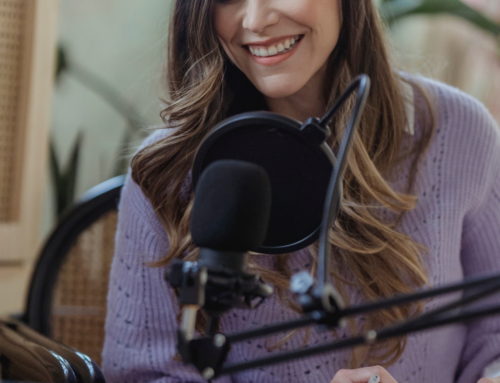Thanks to Suzanne Smith, who sent a very interesting list of 20 “defensive” and “positive and powerful” body language tips. I can’t resist commenting on them, because they are such an admixture of good and bad advice. The original posting is here: http://tinyurl.com/nb4osk. I’ll list each “tip” and then comment after in boldface.
"Defensive Body Language Tips"
1. Invade someone’s personal space. This is a sign of dominance.
• Potentially dangerous advice. Never invade unless you’re willing to back up your bluff with thorough follow-through. In other words, be prepared to fight. And why are you picking a fight, anyway?
2. Unblinking eye contact can be intimidating. Essentially you are staring someone down until they look away.
• Yes, too much eye contact can be intimidating. It can also seem downright weird. Why are you staring? Again, if you’re going to pick a fight, you have to be prepared to duke it out.
3. Standing up straight and tall. In nature, animals make themselves appear larger to avoid conflict and establish dominance with predators or competition. The same technique works in the human world.
• This is good advice – standing straight means that you are assertive without being aggressive or hostile.
4. Speak first. Speaking first gives you the upper hand immediately.
• Only if you have something to say.
5. Touch the person first. Extend your hand to shake hands, touch a person’s elbow, cover their hand while you shake hands. Being the first person to touch another opens up conversation while maintaining control.
• This only has a minor effect on the flow of a conversation. And too much familiarity too soon can be off-putting.
6. Turn your body at an angle to squeeze an uninvited guest out. The third wheel will get the idea.
• This is junior-high-school stuff – effective, but obvious, cheap and potentially nasty — and rude.
"Positive and Powerful Body Language Tips"
7. Maintain a steady even tone. Appear calm, cool and collected by not raising your voice or speaking too quickly.
• This works, just as your mother (or your psychologist) told you, to keep things calm. I thought we were trying to take charge. The aim appears to have changed.
8. Speak heart to heart, or straight forward, to show interest in the conversation.
• Yes, other things being equal. Listening is a more powerful way to show interest.
9. Steer your listener in the direction you wish to go while talking.
• This will only have a minor effect on the flow of the conversation.
10. If you are sitting, keep your feet flat on the floor. Uncross your legs and sit straight up. You’ll appear more confident and interested.
• Trivial
11. Gradually nod in agreement while you are listening to another person speak. Don’t jerk your head around with impatience.
• Nodding builds agreement.
12. Keep your arms open. Crossing your arms is a defensive motion. Keeping your limbs open and relaxed makes you seem comfortable with the situation.
• True, but if you’re feeling defensive, you’ll signal it in many other ways besides this obvious giveaway.
13. Don’t touch your face or cover your mouth with your hands. This movement can make you appear as if you are lying or trying to cover up something.
• Depends on the context. Not a reliable indicator of lying.
14. Lean in slightly while another person is talking.
• Generally, closing the distance between you and someone else indicates interest and builds trust.
15. Use your hands confidently during a conversation.
• Too vague to be useful.
16. Don’t fidget while speaking. Fidgeting shows nervousness.
• Fidgeting can also show impatience, or ADD behavior.
17. Be aware of your facial expressions while you are talking and listening. Remember to smile when you greet and leave someone.
• Smiling is always good, except when the situation demands a frown.
18. Don’t reveal too much information. It can get awkward very quickly.
• I have no idea what this means. Are we talking about body language or something else? The CIA or the PTA?
19. Don’t steal someone else’s thunder when they are telling a story. Allow them to finish and relate if you can.
• That’s basic politeness.
20. Relax your shoulders to avoid appearing uptight or nervous.
• Again, in isolation this won’t help much if you’re nervous.
As I explain in my book, Trust Me: Four Steps to Authenticity and Charisma, this kind of blow-by-blow approach to body language misses the point. Body language is behavior and has to be interpreted in a context of a situation, a person, and a content. In terms of decoding someone else’s behavior, you can’t look at isolated bits of body language. There are simply too many reasons for human behavior. It’s a fool’s game.
In controlling your own behavior, to appear more confident, or open, or in charge, again, it is a fool’s game to try to manage a specific bit of body language. Instead, work on your intent. Then your body language will take care of itself.








I’m trying to imagine the state of mind of the person who created the original list, and it’s a bit scary. Love your comments, though.
I’m trying to imagine the state of mind of the person who created the original list, and it’s a bit scary. Love your comments, though.
Like your analysis Nick, but it is good to see teenagers writing about body language, at least they’re trying
Like your analysis Nick, but it is good to see teenagers writing about body language, at least they’re trying
“Smiling is always good, except when the situation demands a frown”… Can’t help thinking of the poor news anchor who goes from a funny story to tragic before their expression has a chance to catch up. Very disconcerting.
“Smiling is always good, except when the situation demands a frown”… Can’t help thinking of the poor news anchor who goes from a funny story to tragic before their expression has a chance to catch up. Very disconcerting.
Great comments. The original list demonstrated the danger of isolating body language and trying to control it from that side of things.
Steve, not sure where you got the idea that the blog was created by teenagers. It appears to be college level and teachers of physical therapy.
Fred, you’re right – we’ve all seen the awkward transitions of newscasters moving from disaster to comic relief in the blink of an eye. “In other news…” They should take a moment and allow for an emotional transition. That would take a few precious seconds of airtime but it would make for a more authentic newscast.
Great comments. The original list demonstrated the danger of isolating body language and trying to control it from that side of things.
Steve, not sure where you got the idea that the blog was created by teenagers. It appears to be college level and teachers of physical therapy.
Fred, you’re right – we’ve all seen the awkward transitions of newscasters moving from disaster to comic relief in the blink of an eye. “In other news…” They should take a moment and allow for an emotional transition. That would take a few precious seconds of airtime but it would make for a more authentic newscast.
Great comments. I agree with much of what you say. I also know that what becomes challenging for some people is doing this right: “In controlling your own behavior, to appear more confident, or open, or in charge, again, it is a fool’s game to try to manage a specific bit of body language. Instead, work on your intent. Then your body language will take care of itself.”
My research and work with the theory and practice of Emotional Intelligence teaches me that the kind of result you mention can only be won by people with honed self-awareness skills. When self-awareness is lacking, often there can be a disconnect between INTENT and IMPACT. That’s what makes for the continued thirst for body-language advice.
Great comments. I agree with much of what you say. I also know that what becomes challenging for some people is doing this right: “In controlling your own behavior, to appear more confident, or open, or in charge, again, it is a fool’s game to try to manage a specific bit of body language. Instead, work on your intent. Then your body language will take care of itself.”
My research and work with the theory and practice of Emotional Intelligence teaches me that the kind of result you mention can only be won by people with honed self-awareness skills. When self-awareness is lacking, often there can be a disconnect between INTENT and IMPACT. That’s what makes for the continued thirst for body-language advice.
Halelly — good point. Self-awareness is key. When I talk about intent with clients, a great deal of self-awareness is necessary to understand what your intent is and to get focused on that with presence…..
Halelly — good point. Self-awareness is key. When I talk about intent with clients, a great deal of self-awareness is necessary to understand what your intent is and to get focused on that with presence…..